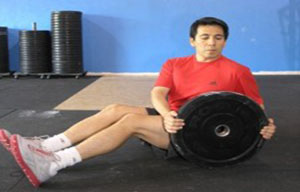 Hey fellow divers! I hope you are having an amazing time enjoying the underwater realm and staying safe.
Hey fellow divers! I hope you are having an amazing time enjoying the underwater realm and staying safe.
At this point, I’m sure you’re a big believer that the proper level of physical fitness can only enhance our diving experience and our safety margin.
With this in mind, I have 3 tips addressing some of the most controversial points when it comes to applying physical fitness for the diver.
I will cover each tip in its own segment, so make sure to return often or subscribe to the feed of this blog. Enjoy!
Tip 1: Strength First, Cardio next
The popular belief is an unfortunate inheritance from the 80’s and believes in the outdated notion that traditional cardiovascular training has the most benefits in overall fitness, and it should be the focus of the diver. I beg to differ.
You may remember–from previous articles–the puzzled reactions I get when I tell those seeking my guidance to prioritize their strength training over cardiovascular work. I’m greeted by confused stares, puzzles looks and quizzical minds seeking the protection of the popular I don’t want to get big or I’m not interested in lifting heavy excuses.
At this point I remind the diver the most demanding parts of the dive are hauling gear, entries, exits, surface swims among others. Unexpected situations such as emergencies will also test our physical capacity but they are not thankfully part of the regular diving routine. The immersion experience of the dive, which we are after, should be as relaxed as possible with efficient trim and motion. Such qualities are direct results of skill development rather than physical capacity.
Sure, I may condone such concerns if they had any linear relevance to the purported effects but that’s never the case. Truth is, size and heavy lifting are specific goals requiring specific training methods and responses. They may–or may not–have any substantive effects in the overall role of fitness. It is at this point that I point out to the diver that the true definition of strength is our ability and capacity to overcome inertia, plain and simple.
Heavy lifting or increased muscular size could be specific results but the essence of strength training is to prepare the individual to deal with the demands imposed by gravity or activities. Part of those activities could be cardiovascular training which can be easily summarized as multiple bouts of sub-maximal strength. This in turn means the lower the strength, the lower the capacity to do cardiovascular work since it is the active musculoskeletal system what gets the heart working, not the other way around.
Strength means greater endurance capacity, self-sufficiency, and a greater chance of survival in stressful conditions. It is a great asset for yourself and your dive buddies. Combine that with skill and the result is a diver enjoying many years of fun diving, ready to handle the unexpected without hesitation.
In the next installment I will cover how fitness enthusiasts maim their exercise benefits by neglecting a simple factor. It has nothing to do with duration or intensity. It is so simple, it goes largely neglected. Stay tuned!
Until Next Time!

